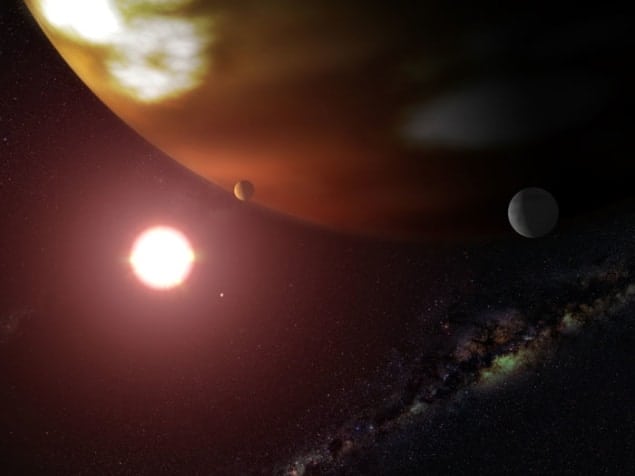
Just because life emerged early on Earth does not mean that this is likely to occur on other Earth-like planets, says a pair of US astrophysicists. The researchers’ new mathematical model says that life could just as easily be rare – putting a damper on the excitement surrounding the recent discovery of Earth-like planets orbiting stars other than the Sun.
Estimates of the prevalence of life in the universe suffer from a severe lack of data. Indeed, they only have one data point – Earth – to support them. We are not even certain about whether our nearest neighbour, Mars, ever hosted colonies of microbes. Still, going on the Earth alone, it appears that life arose within a few hundred million years after the seething magma settled into a habitable planet. That seems early, considering that life then evolved for something like 3.8 billion years and looks likely to continue until the Sun balloons into a red giant about around five billion years from now.
“The rapid appearance of life on Earth is probably the best data we have to constrain the probability of life existing elsewhere in the universe, so it deserves to be squeezed as much as possible,” says Charley Lineweaver, an astrophysicist at the Australian National University.
Built-in ignorance
Scientists take this one piece of information from the Earth and try to say something about the probability that living organisms will appear elsewhere in a certain amount of time, provided that conditions are favourable. Previous models did not explicitly consider the effect of researchers’ prior beliefs on the outcome of these statistical studies. For example, some previous work tried to express ignorance by giving equal weight to every rate at which life could arise. But David Spiegel and Edwin Turner of Princeton University in New Jersey have now shown that this assumption actually dictates the outcome of the analysis.
They used a Bayesian method to reveal the effect of data on models that predict the probability that life arises. The theorem, developed by the 18th-century mathematician Thomas Bayes, combines a theoretical model with “prior” assumptions and data in order to draw conclusions about the probability of certain outcomes.
Because of our ignorance about what conditions are important to spark life, Spiegel and Turner modelled its origin as a “black box”. The probability that life arose on a given planet is represented by a Poisson distribution – the same type used to describe radioactive decay – and it depends on the constant probability per unit time that life will arise, and for how long life has had the opportunity to get started.
Thinking about biases
Without at least 3.8 billion years for evolution, humans would not have been around to pose the question of whether life is common in the universe. This biases sentient creatures such as humans towards existing on a planet where life started earlier. The researchers expressed this in the probability that life emerges, adding a dependence on the longest possible delay, that still leaves enough time for humans to appear, between the beginning of habitability and the advent of life.
The key to the prior term in the Bayesian analysis is the rate at which life arises. Giving each rate an equal probability in the prior, the model concluded that life is likely to emerge even without considering the Earth’s data. Conversely, by giving each possible delay period between the habitability of a planet and the onset of life the same probability, the model concluded that life rarely arose. Although both priors seem to represent ignorance, they determine the outcome of the calculation, say the researchers. Indeed, the priors build in an unwanted scale, making large rates – or large delay periods – seem more likely.
To get rid of the scale problem, Spiegel and Turner instead gave the logarithm of each rate an equal probability, and they found that the model was much more responsive to data. They considered a variety of possible scenarios for the Earth. For instance, life could have appeared 10 million years after the planet first became habitable, or 800 million years later. If life emerged in less than about 200 million years, then it seems more likely that the rate at which life arises is high. In general, however, the pair’s analysis suggests that life is “arbitrarily rare in the universe”.
Better fossil data needed
Lineweaver calls the work an “important advance”, agreeing that giving all emergence rates an equal probability is “probably too prescriptive on the result”. Still, he believes that the approach would benefit from a more sophisticated prior and alternative data. “The result is very sensitive to exactly how rapidly life formed on Earth once it could,” he says. He notes that the sparse fossil record gives only the latest limit for when life arose, not an estimate of when life emerged.
Searches for biomarkers, chemicals only known to be produced by living things, in the atmospheres of planets around distant suns could provide more data for these analyses. “The abundance of life in the universe is one of greatest questions of our time,” says Don Brownlee, an astrophysicist at the University of Washington in Seattle. “People have probably always pondered this question, but at the present time we actually have tools in hand to gain great insight into its answer.”
This research has been submitted to Proceedings of the National Academy of Sciences USA and a preprint is available at arXiv:1107.3835.



